Action fiction is a literary genre that focuses on stories that involve high-stakes, high-energy, and fast-paced events. This genre includes a wide range of subgenres, such as spy novels, adventure stories, tales of terror and intrigue and mysteries. This kind of story utilizes suspense, the tension that is built up when the reader wishes to know how the conflict between the protagonist and antagonist is going to be resolved or what the solution to the puzzle of a thriller is.

The Perils of Penelope Pitstop is an American animated television series produced by Hanna-Barbera Productions that premiered on CBS on September 13, 1969. The show ran for one season with a total of 17 half-hour episodes, the last first-run episode airing on January 17, 1970. Repeats aired on CBS until September 4, 1971; and in syndication as Fun World of Hanna-Barbera from 1976 to 1982. It is a spin-off of Wacky Races, reprising the characters of Penelope Pitstop and the Ant Hill Mob.

The Crimson Ghost is a 1946 American film serial directed by Fred C. Brannon and William Witney. Produced by Republic Pictures and written by Albert DeMond, Basil Dickey, Jesse Duffy, and Sol Shor, it was the last serial directed by Witney. It is divided into twelve chapters and stars Charles Quigley as a criminologist who attempts to thwart the efforts of the eponymous villain to steal a device that can render electrical devices powerless. The serial also stars Linda Stirling, Clayton Moore, and I. Stanford Jolley.

Mysterious Doctor Satan is a 1940 American film serial directed by William Witney and John English. Produced by Republic Pictures, the serial stars Edward Ciannelli, Robert Wilcox, William Newell, C. Montague Shaw, Ella Neal, and Dorothy Herbert. The title of the serial is derived from that of its chief villain.

The Great Alaskan Mystery is a 1944 Universal film serial about government agents trying to stop Nazi spies from getting their hands on futuristic weapons.

The Fighting Devil Dogs (1938) is a 12-chapter Republic movie serial starring Lee Powell and Herman Brix, the latter better known by his later stage name, Bruce Bennett. It was directed by William Witney and John English. While not often considered a great serial, as it contains much stock footage and two recap chapters, it is famous for its main villain, the Lightning—the first costumed supervillain. There is some speculation that George Lucas used the Lightning as a template for Darth Vader.
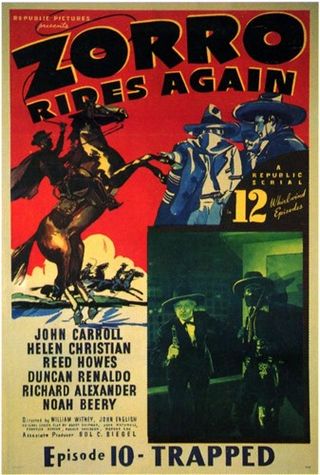
Zorro Rides Again (1937) is a 12-chapter Republic Pictures film serial. It was the eighth of the sixty-six Republic serials, the third with a Western theme and the last produced in 1937. The serial was directed by William Witney & John English in their first collaboration. The serial starred John Carroll who also sang the title song as a modern descendant of the original Zorro with Carroll stunt doubled by Yakima Canutt. The plot is a fairly standard western storyline about a villain attempting to illicitly take valuable land. The setting is a hybrid of modern (1930s) and western elements that was used occasionally in B-Westerns. It was also the first in a series of five Zorro serials, followed by Zorro's Fighting Legion (1939), Zorro's Black Whip (1944), Son of Zorro (1947) and Ghost of Zorro (1949).
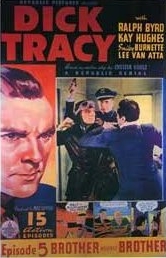
Dick Tracy (1937) is a 15-chapter Republic movie serial starring Ralph Byrd based on the Dick Tracy comic strip by Chester Gould. It was directed by Alan James and Ray Taylor.

Dick Tracy vs. Crime, Inc. (1941) is a Republic Movie serial based on the Dick Tracy comic strip. It was directed by the team of William Witney and John English with Ralph Byrd reprising his role from the earlier serials. It was the last of the four Dick Tracy serials produced by Republic, although Ralph Byrd went on to portray the character again in two features and on television.
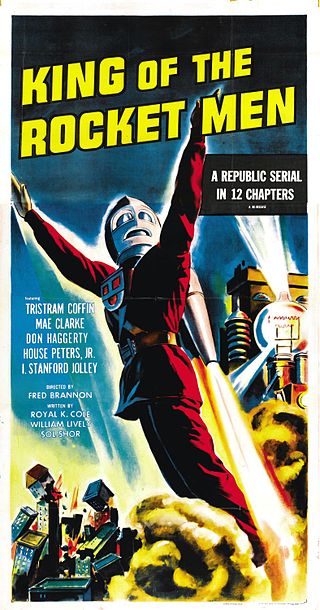
King of the Rocket Men is a 1949 12-chapter movie serial from Republic Pictures, produced by Franklin Adreon, directed Fred C. Brannon, that stars Tristram Coffin, Mae Clarke, Don Haggerty, House Peters, Jr., James Craven, and I. Stanford Jolley.

The Invisible Monster is a 1950 Republic film serial, starring Richard Webb and Aline Towne.
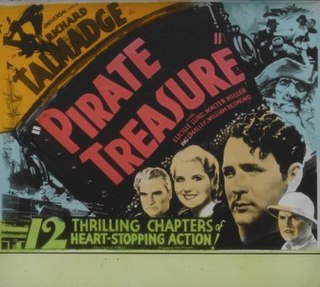
Pirate Treasure is a 1934 Universal film serial. It was the twenty-first sound serial released by Universal, of the sixty-nine they released in total. It was a rare example of the swashbuckling genre in the film serial medium.

The Spider's Web is a 1938 Columbia Pictures movie serial based on the popular pulp magazine character The Spider. It was the fifth of the 57 serials released by Columbia.
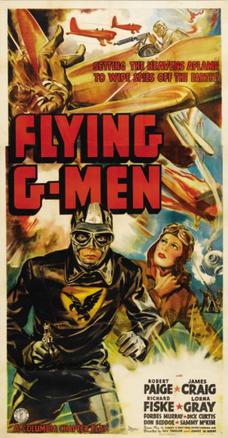
Flying G-Men is a 15-episode 1939 adventure film Film serial, directed by James W. Horne and Ray Taylor. The serial was the sixth of the 57 serials released by Columbia. Four "Flying G-Men" battle with enemy saboteurs intent on destroying American military defences.
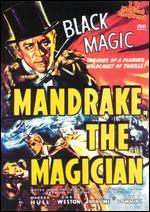
Mandrake the Magician (1939) is the seventh serial released by Columbia Pictures. It was based upon the King Features comic strip of the same name.

The Shadow (1940) was the ninth serial released by Columbia Pictures. It was based upon the classic radio series and pulp magazine superhero character of the same name.
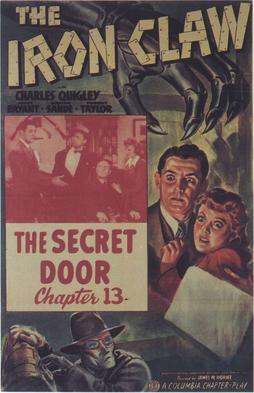
The Iron Claw (1941) was the 15th serial released by Columbia Pictures.

The House of Hate is a 1918 American film serial directed by George B. Seitz, produced when many early film studios in America's first motion picture industry were based in Fort Lee, New Jersey.

A serial film,film serial, movie serial, or chapter play, is a motion picture form popular during the first half of the 20th century, consisting of a series of short subjects exhibited in consecutive order at one theater, generally advancing weekly, until the series is completed. Usually, each serial involves a single set of characters, protagonistic and antagonistic, involved in a single story, which has been edited into chapters after the fashion of serial fiction and the episodes cannot be shown out of order or as a single or a random collection of short subjects.



















